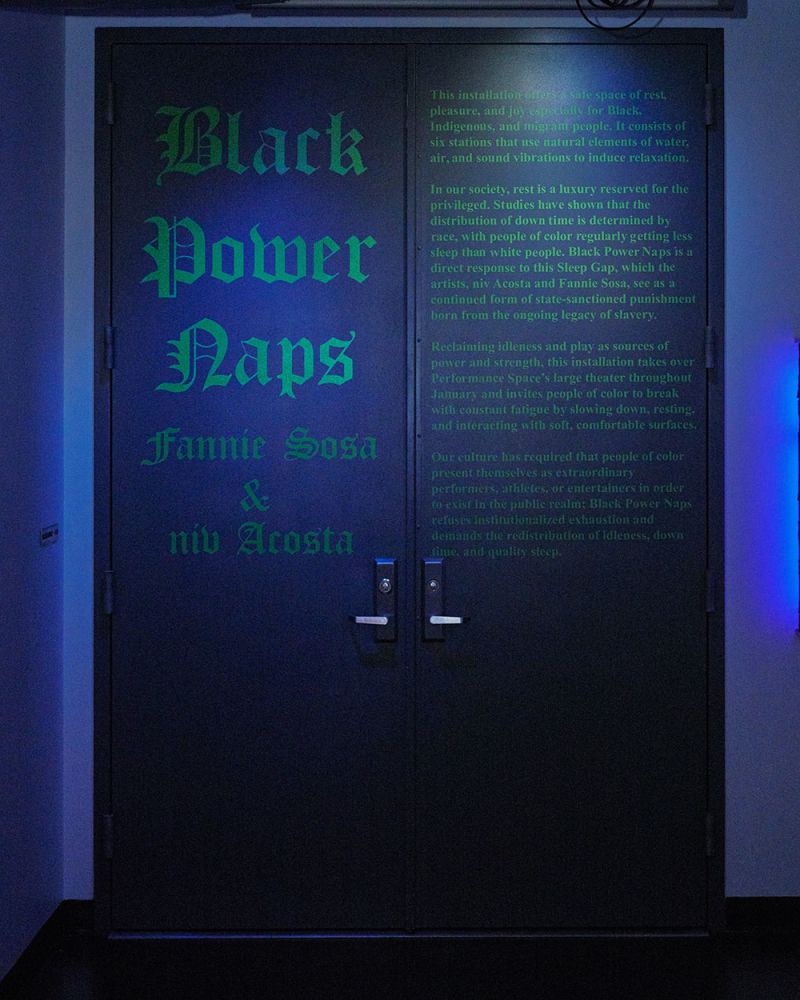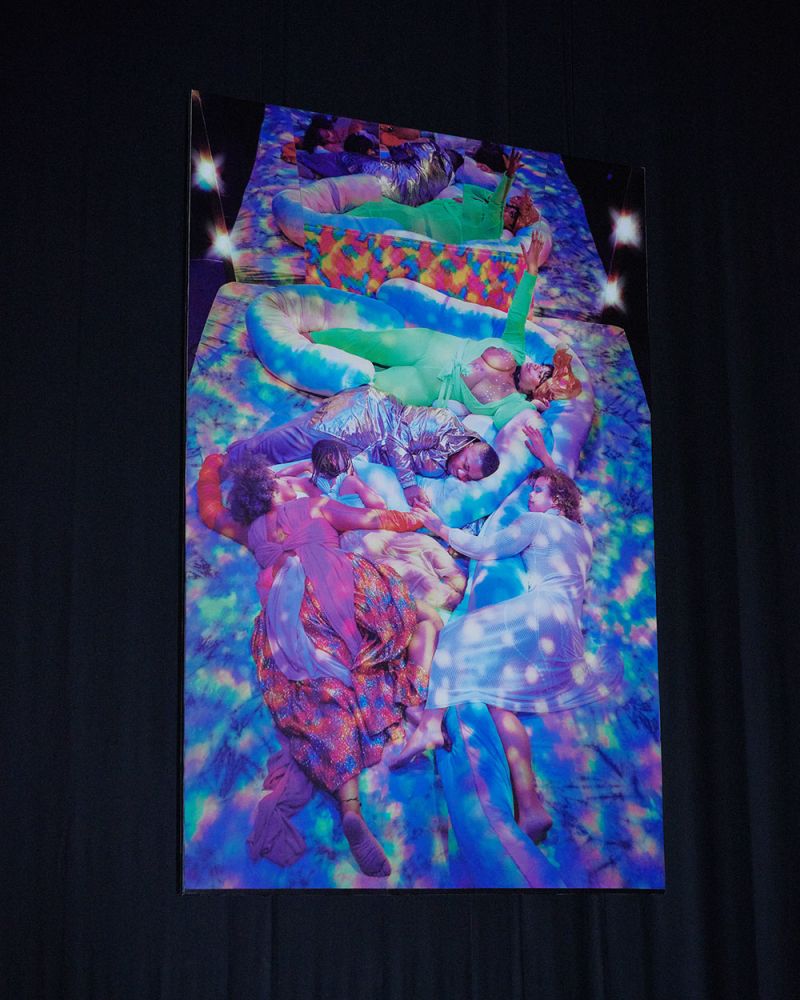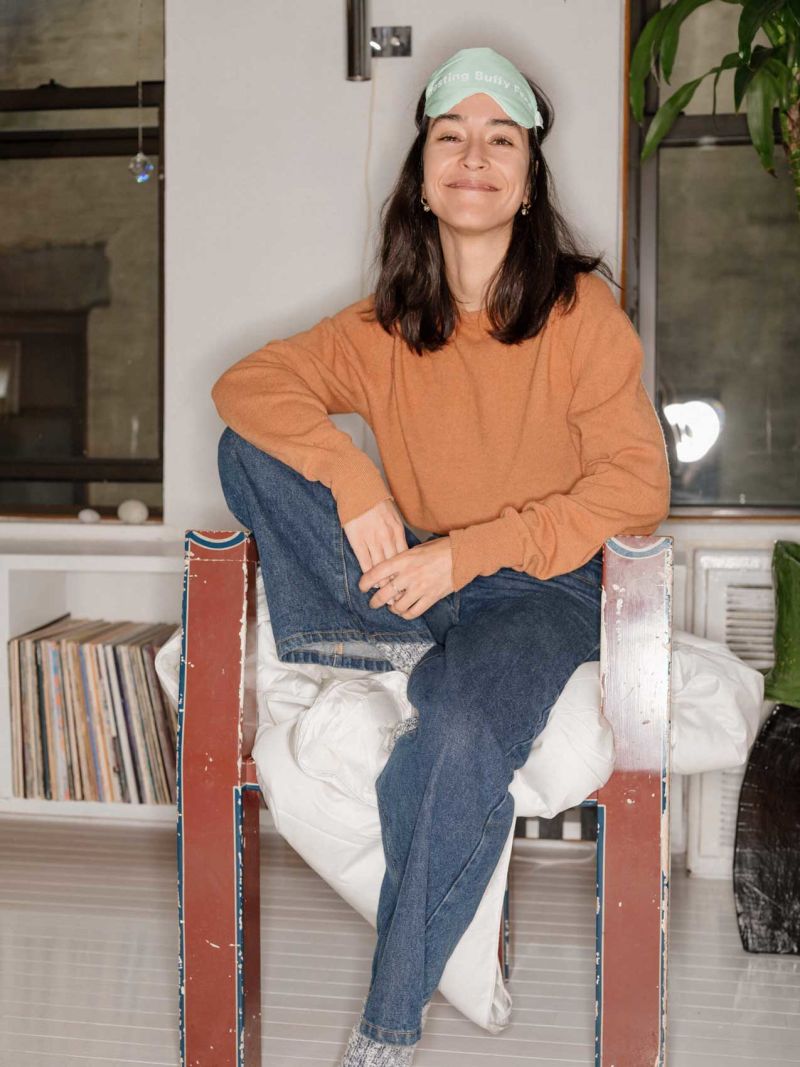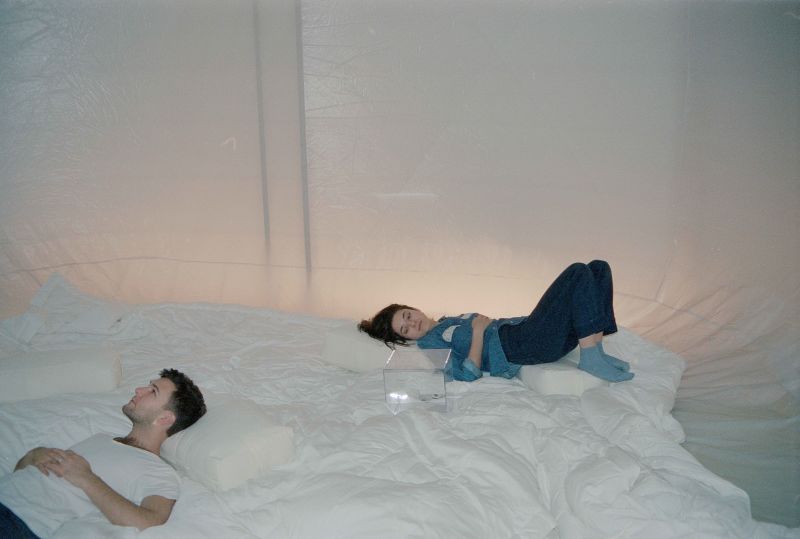
How Two Artists Hope To Close The Racial Sleep Gap
An interview with niv Acosta and Fannie Sosa on what it means to rest, what it means to dream, and their recent performance of Black Power Naps.
Last month, The Performance Space in New York City hosted a series of performances by Niv Acosta and Fannie Sosa that put what many researchers call the ‘racial sleep gap’ into perspective. The show, called Black Power Naps, was a response to a growing number of studies that show black Americans sleep significantly worse than white Americans. One study, for example, suggests that black Americans are five times more likely than white Americans to get less than six hours of sleep per night. The disparity is difficult for scientists to pin down empirically, but through an experiential tapestry of work, Acosta and Sosa grasp the multifaceted nature of the condition. Black rest, they find, is as spiritual as it is medicinal, as shared as it is private. Following the show’s final presentation, we caught up with the artists to learn more about what it means to rest and what it means to dream.

soft—space
How did you develop the concept for this performance?
sosa
Well, we were tired and we were talking about a lot of how our art is kind of like a dream deferred, to quote Langston Hughes. As black, migrant, queer, trans performing artists, we’re seen doing art about the future, or about the past, but very often, our present situation is really hard and difficult. We don’t often get to bring our present bodies to the institution. So we decided, what if we don’t defer this dream, and come out with a really hands-on, really present-moment piece. At times it looked like a dance, other times it looked like writing, at moments it looked like a fashion line, even. It was a really multi-polyvalent space that kept happening.
soft—space
In your own personal experiences, how do you feel that racism wears you out on a day-to-day basis?
acosta
Well, it is about the labor that is disembodied. The labor that makes sure you show up with all of your wits about you. We’re looking at the history of so much sleeplessness. Imagine our current families but also our families before that and before that and before that, so inherited restlessness. I see how structures and microaggressions and everything that we have to deal with at borders…all of these things ultimately withdraw your labor, withdraw your rest.
sosa
There is a lot of cognitive arousal when you’re going through life as a racialized person or a gendered person. There are a lot of experiences, macro/microaggressions that just seize your psyche and make you go over them and think if you could have done something different, could have had different outcomes, and so, folks have a harder time falling asleep. And so we say sleep is for the privileged, peace of mind is for the privileged. Downtime is for the privileged.

soft—space
With a performance like this, do you see it as stripping that structural violence away?
acosta
People come in this space, they feel like it’s a sanctuary. They feel like they come here and their body is repaired, even though they haven’t gotten a massage or whatever. There’s a therapeutic and healing aspect to this work. We’re working with medicine, we’re working with healing, with acupressure. It’s very much scientific research, it’s very much social activism. It’s very much a meeting space. Like a town hall. How many dreams could not be deferred in the space where you can rest, a space that’s welcoming you and inviting you to rest.
sosa
All the colors and the way space is filled, it is like an inviting the dreamscape to happen, inviting that dream to not be deferred today.


